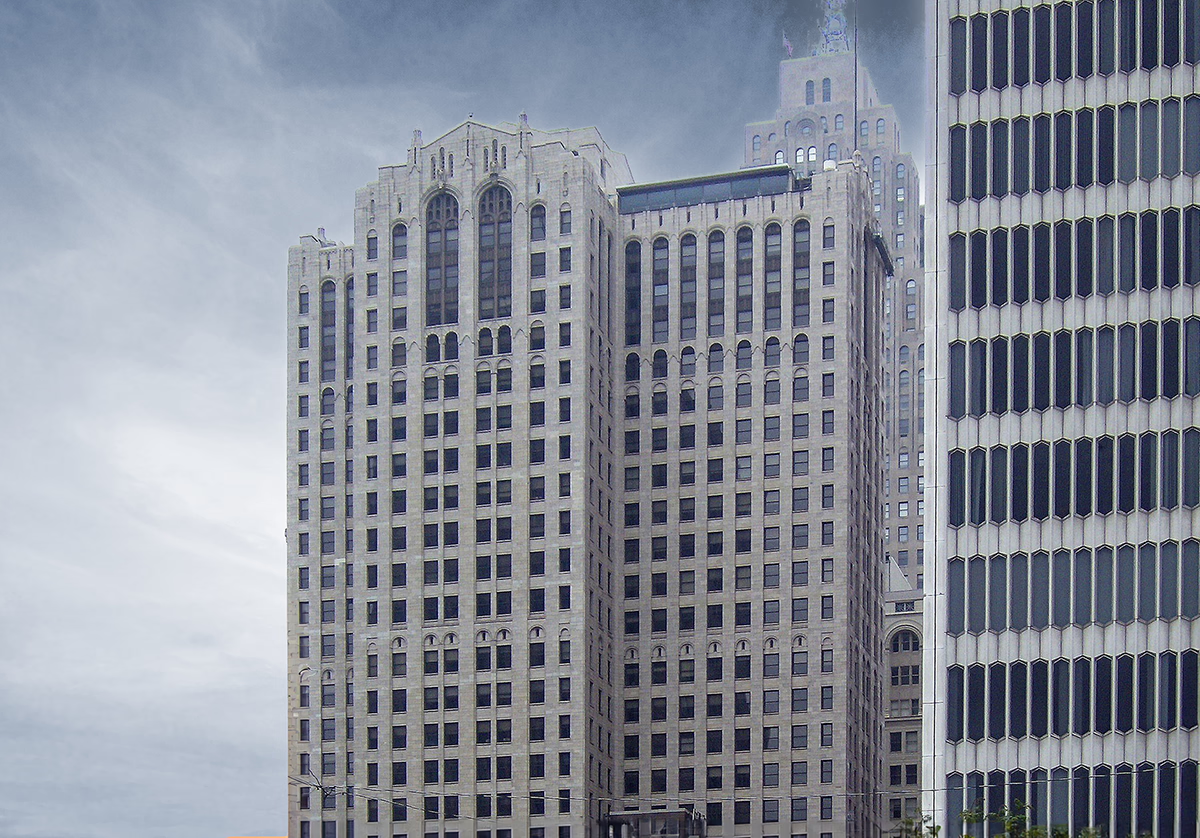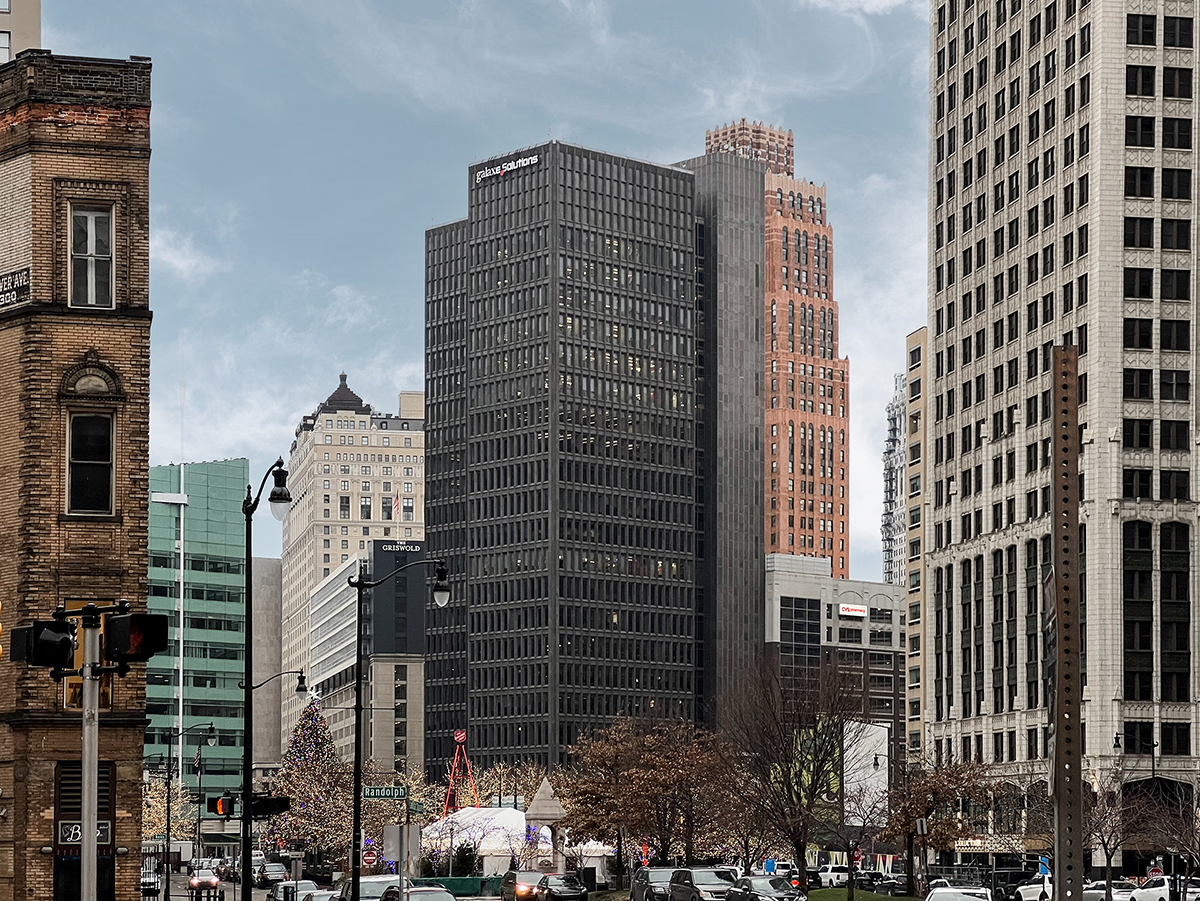Buhl Building vs 1001 Woodward


Comparing the Buhl Building and the 1001 Woodward is particularly interesting because they share the same skyline in Detroit, MI, and were both designed by Smith, Hinchman & Grylls. However, they were completed more than 40 years apart.
This offers a unique perspective on how the architect's style and the city's architecture evolved over time.
Height & Size
The Buhl Building is clearly the larger tower of the two, both in terms of height and number of floors. It rises to 367ft (112m) with 27 floors above ground, while the 1001 Woodward reaches 338ft (103m) with 23 floors above ground.
Of course, each project may have faced different briefs or regulatory constraints, which we don't really know about and could also explain the outcome.
Architectural Style
The Buhl Building was designed in the Neogothic style, while the 1001 Woodward reflects the principles of International Style.
The Buhl Building represents a late expression of the Neogothic, a style already in decline in 1925 when it was completed. By contrast, the 1001 Woodward followed the then mainstream International Style, embodying the dominant architectural direction of its time.
With 40 years between them, the comparison also reflects how quickly architectural priorities can shift from one dominant language to another.
Uses
Both the Buhl Building and the 1001 Woodward were designed to serve as commercial towers, and that has remained their main use since their completion, serving similar roles in the urban fabric.
Structure & Facade
Both towers share the same structural solution, a Frame system.
A frame structure uses a grid of columns and beams to carry the building's loads. This frees the walls from structural duties, allowing for flexible floor plans and larger windows.
However, when it comes to the facade, both buildings use different approaches. The Buhl Building uses a Masonry facade, while the 1001 Woodward uses a Window Wall facade.
A Masonry facade like the one seen in the Buhl Building features a heavy masonry skin that gives it a more clasical look, while a window-wall facade like the one seen in the 1001 Woodward uses panels fitted between floor slabs, leaving slab edges visible.
| Buhl Building | 1001 Woodward | |
|---|---|---|
| Smith, Hinchman & Grylls | Architect | Smith, Hinchman & Grylls |
| 1924 | Construction Started | 1963 |
| 1925 | Year Completed | 1965 |
| Neogothic | Architectural Style | International Style |
| Commercial | Current Use | Commercial |
| 27 | Floors Above Ground | 23 |
| 2 | Floors Below Ground | 2 |
| 112 m | Height (m) | 103 m |
| 36,232 m² | Usable Area (m²) | 29,729 m² |
| Frame | Structure Type | Frame |
| Steel | Vertical Structure Material | Steel |
| Concrete | Horizontal Structure Material | Concrete |
| Limestone | Main Facade Material | Glass, Granite |
| MI | State | MI |
| Detroit | City | Detroit |
| 535 Griswold Street | Address | 1001 Woodward Avenue |